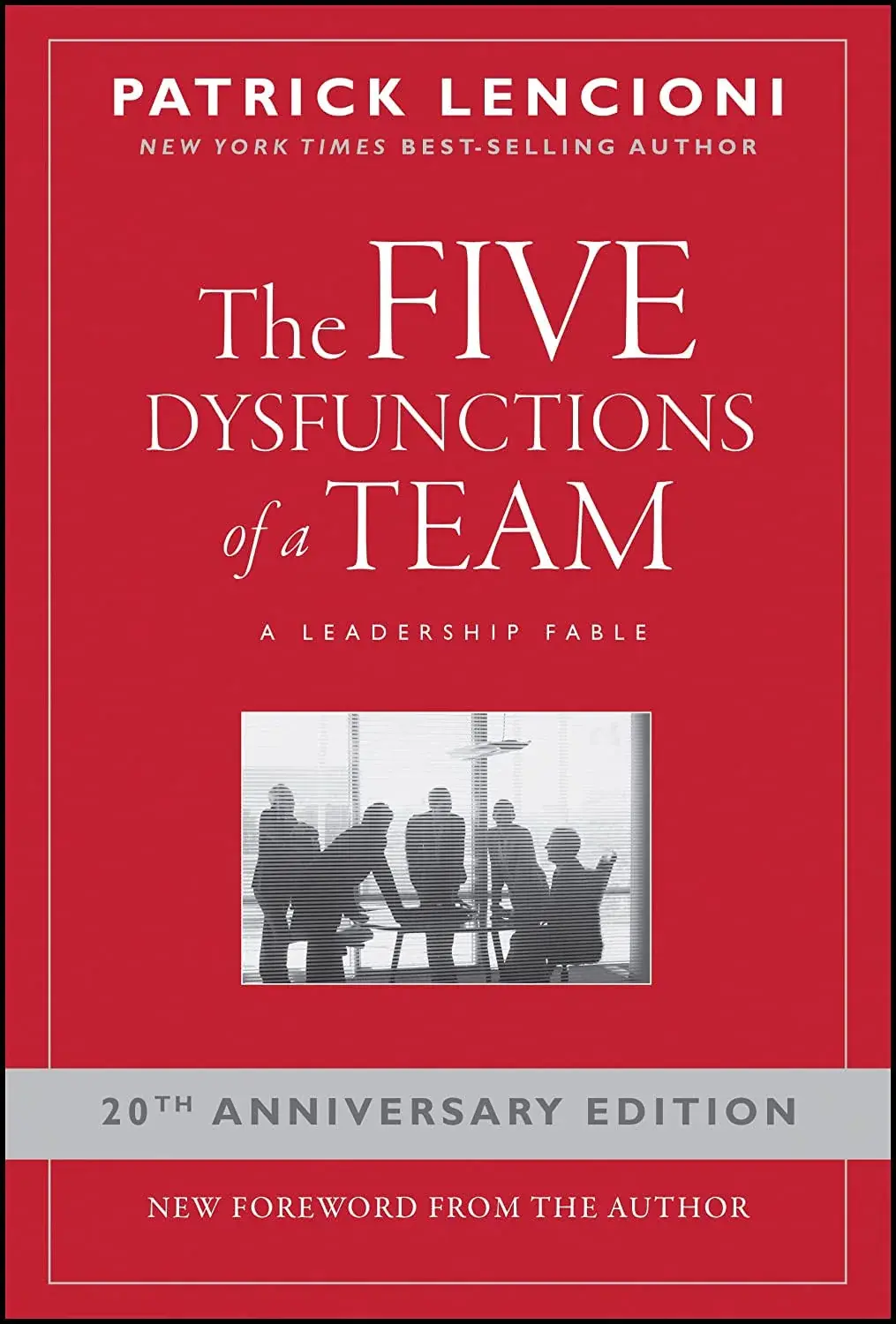Five Dysfunctions of a Team
The Five Dysfunctions of a Team” by Patrick Lencioni delves into the common obstacles that impede team success and provides insights into how to overcome them. Through a fictional narrative, Lencioni illustrates the dynamics of dysfunction within teams, emphasizing the importance of trust, healthy conflict, commitment, accountability, and a focus on results. By understanding and addressing these dysfunctions, teams can achieve greater cohesion, productivity, and ultimately, success.
Key Takeaways:
- Absence of Trust:
-
- Trust serves as the foundation for effective teamwork.
- Without trust, team members are hesitant to be vulnerable or admit weaknesses.
- Building trust requires team members to be open and honest with one another, sharing their strengths, weaknesses, and fears.
- Trust is built over time through consistent actions and communication.
- Leaders play a crucial role in fostering trust within the team by setting an example and creating a safe environment for open dialogue.
- Fear of Conflict:
-
- Healthy conflict is necessary for teams to make sound decisions.
- Fear of conflict leads to artificial harmony, where important issues are avoided or left unresolved.
- Teams must embrace constructive debate, where differing viewpoints are aired and discussed openly.
- Conflict should be focused on issues, not personalities, and resolved in a respectful manner.
- Effective conflict resolution requires active listening, empathy, and a willingness to compromise.
- Lack of Commitment:
-
- Without buy-in from all team members, decisions lack clarity and momentum.
- Commitment is fostered when team members engage in robust debate and feel their voices are heard.
- Clear direction and alignment around decisions are essential for building commitment.
- Leaders must ensure that all team members understand the rationale behind decisions and are committed to achieving common goals.
- Regular check-ins and progress updates help keep the team focused and accountable.
- Avoidance of Accountability:
-
- Holding one another accountable ensures that commitments are met and performance standards are upheld.
- Without accountability, team members may shirk responsibilities or fail to deliver on commitments.
- Establishing clear expectations and consequences for performance is key to fostering accountability.
- Leaders must lead by example and hold themselves accountable to the same standards as their team members.
- Constructive feedback should be provided regularly to address performance issues and support growth.
- Inattention to Results:
-
- Team success should always take precedence over individual agendas or egos.
- When team members prioritize personal goals over collective outcomes, the team suffers.
- Maintaining a focus on results requires a shared commitment to achieving the team’s objectives.
- Leaders must set clear performance metrics and regularly assess progress towards goals.
- Celebrating achievements and recognizing contributions reinforces the importance of results-focused behavior.
Key Action Items:
- Build Trust:
-
- Encourage open communication and vulnerability within the team.
- Lead by example, demonstrating trustworthiness and honesty.
- Foster an environment where team members feel safe expressing their thoughts and feelings.
- Invest in team-building activities and exercises to strengthen relationships and build rapport.
- Provide opportunities for team members to share personal stories and experiences to deepen connections.
- Embrace Conflict:
-
- Establish norms for constructive debate and disagreement.
- Encourage diverse perspectives and actively seek out dissenting opinions.
- Address conflicts promptly and directly, focusing on finding solutions rather than assigning blame.
- Train team members in conflict resolution techniques and communication skills.
- Facilitate team discussions and brainstorming sessions to encourage healthy debate and creative problem-solving.
- Drive Commitment:
-
- Ensure all team members understand and agree upon team goals and objectives.
- Solicit input from all stakeholders before making decisions.
- Create a culture where team members are invested in the team’s success and feel accountable for their contributions.
- Establish a shared vision and purpose that inspires commitment and dedication.
- Provide regular updates on progress towards goals and celebrate milestones along the way.
- Establish Accountability:
-
- Define clear roles, responsibilities, and performance expectations for each team member.
- Regularly review progress towards goals and hold team members accountable for their commitments.
- Provide constructive feedback and support to help team members meet their obligations.
- Implement systems and processes to track performance and measure results.
- Encourage peer-to-peer accountability and support within the team.
- Focus on Results:
-
- Align individual and team goals with overarching objectives.
- Celebrate successes and course-correct as needed to ensure progress towards desired outcomes.
- Encourage a mindset of continuous improvement and a willingness to adapt strategies as circumstances change.
- Foster a culture of transparency and collaboration where team members share information and resources to achieve common goals.
- Establish key performance indicators (KPIs) and regularly monitor and evaluate progress towards achieving them.
Conclusion:
“The Five Dysfunctions of a Team” highlights the critical role that trust, conflict, commitment, accountability, and results play in fostering effective teamwork. By addressing these dysfunctions head-on and implementing the key action items outlined, teams can cultivate a culture of collaboration, innovation, and success. By prioritizing trust, embracing healthy conflict, fostering commitment, establishing accountability, and maintaining a focus on results, teams can overcome obstacles and achieve their full potential. With strong leadership and a shared commitment to excellence, teams can navigate challenges, drive performance, and achieve sustainable success in today’s dynamic business environment.






